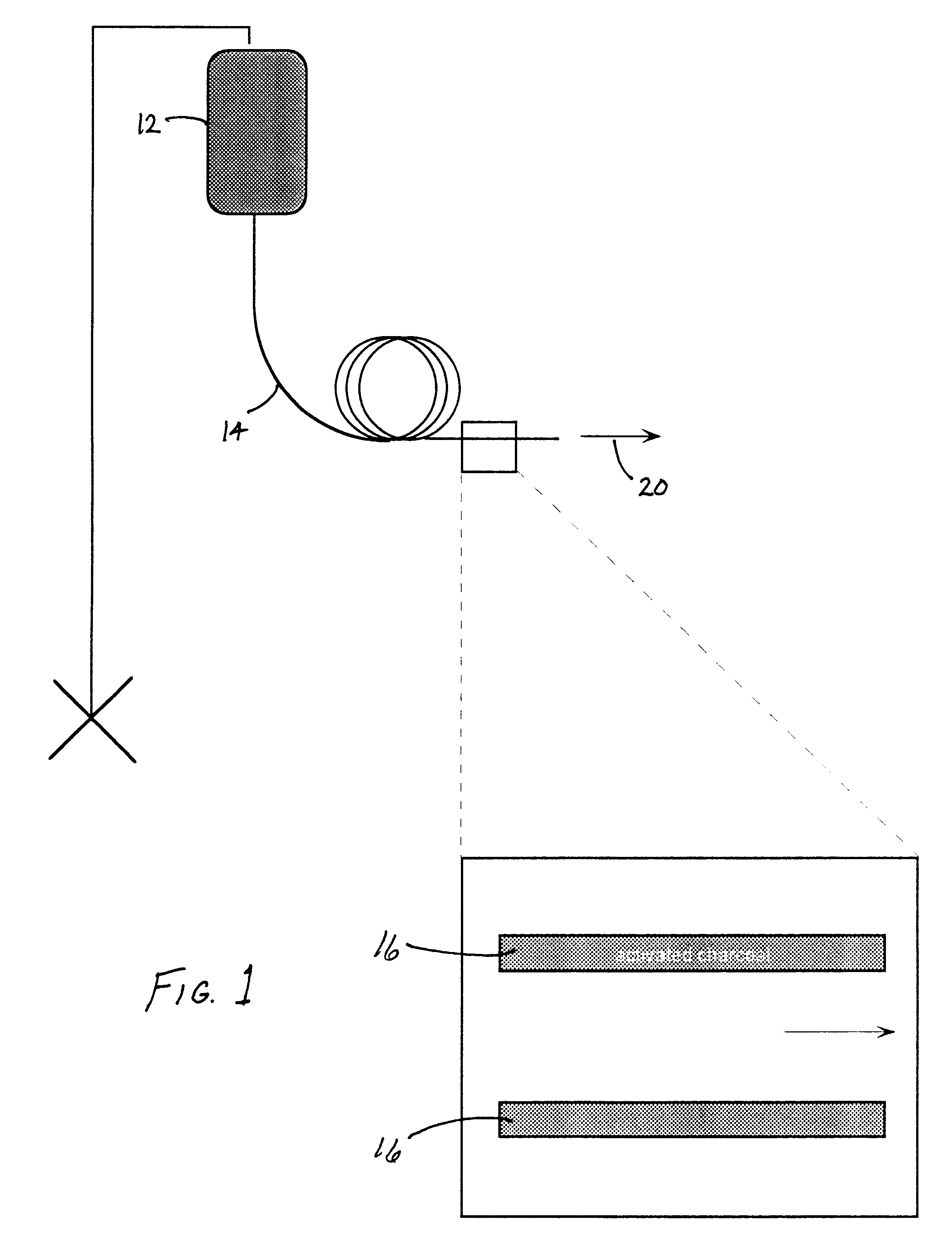Sorbent method for removal of cryoprotectants from cryopreserved animal cells
a cryoprotectant and animal cell technology, applied in the field of sorbent method for the removal of cryoprotectants from cryopreserved animal cells, can solve the problems of destroying biological cells and tissues, and unable to discover blood-borne diseases with a latency period longer than 14 days,
- Summary
- Abstract
- Description
- Claims
- Application Information
AI Technical Summary
Benefits of technology
Problems solved by technology
Method used
Image
Examples
example 1
Use of Charcoal to Remove Glycerol from Cells in a Single Step Process
Charcoal, more particularly, activated charcoal, will irreversibly bind glycerol, a commonly used cryoprotectant chemical compound. By adding charcoal to glycerolized cell suspension, glycerol will bind to the charcoal and be removed from the solution and from the intercellular compartment.
Many cells, such as red blood cells, used widely in transfusion medicine are cryopreserved using 1-3 M concentrations of glycerol. One of the major rate limiting factors using current protocols for freezing red blood cells, is the time it takes to remove the glycerol from the cells before they can safely be transfused into a patient. This is because, using standard washing approaches for glycerol removal, the red cells will undergo extreme swelling and lyse unless the washing procedure is performed very slowly. Currently it takes approximately 1 hour to deglycerolize one unit of blood, which is far too long a time for emergency ...
experiment 1
ding of Glycerol: Charcoal (0.5 ml powdered material) was added to a 1 ml sample consisting of distilled water and 0.5 M glycerol (572 milli-Osmolal [mOsm]). The resulting charcoal / water / glycerol preparation was placed on a sample rocker for 15 minutes, centrifuged to remove the charcoal and the osmolality of the solution determined. The osmolality was reduced to 437 mOsm., or to 76% of the original value. These data demonstrate that charcoal will bind glycerol. Longer exposure times and / or increased surface area of the charcoal material (e.g., a cartridge configuration through which the solution will pass) can be used for efficient glycerol removal.
example 2
Use of Charcoal to Remove 1,2-Propanediol or Ethylene Glycol from Cells in a Single Step Process
As with glycerol, charcoal will irreversibly bind 1,2-propanediol (also called propylene glycol [PG]) and ethylene glycol [EG], which are also commonly used cryoprotectant compounds. By adding charcoal to a cell suspension, the propylene glycol or ethylene glycol will bind to the charcoal and be removed from the solution and from intracellular regions.
Many cells, such as human embryos, used widely in reproductive medicine are cryopreserved using 1-2 M concentrations of propylene glycol. As with the glycerol case and red blood cells, one of the major rate limiting factors using current protocols for utilizing embryos, is the time it takes to remove the cryoprotectants from the cells before they can safely be transfused or transplanted into a patient. This is because, using standard washing approaches for cryoprotectants, the cells will undergo extreme swelling and lyse unless the washing p...
PUM
| Property | Measurement | Unit |
|---|---|---|
| time | aaaaa | aaaaa |
| concentration | aaaaa | aaaaa |
| volume | aaaaa | aaaaa |
Abstract
Description
Claims
Application Information
 Login to View More
Login to View More - R&D
- Intellectual Property
- Life Sciences
- Materials
- Tech Scout
- Unparalleled Data Quality
- Higher Quality Content
- 60% Fewer Hallucinations
Browse by: Latest US Patents, China's latest patents, Technical Efficacy Thesaurus, Application Domain, Technology Topic, Popular Technical Reports.
© 2025 PatSnap. All rights reserved.Legal|Privacy policy|Modern Slavery Act Transparency Statement|Sitemap|About US| Contact US: help@patsnap.com


